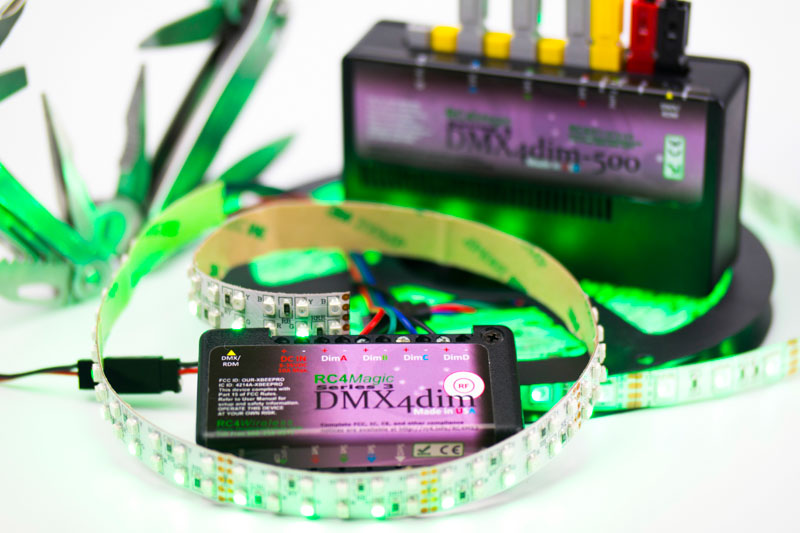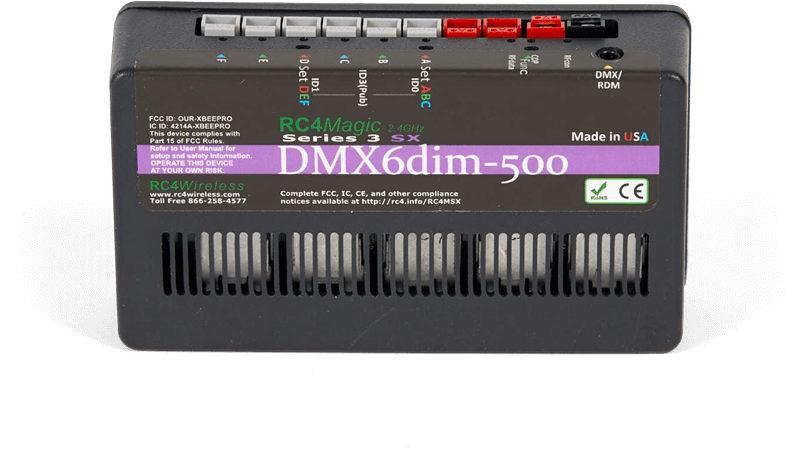RC4 Features

Simply the Best Color Control Available
Color mixing has been a cornerstone of theatrical lighting design from the earliest days of incandescent lamps and gels. Today, LEDs offer even more vivid color while drawing less power, fitting into smaller spaces, and generating almost no heat.
The easiest way to mix color using DMX channels is direct control of each primary color with a separate dimmer: a channel for red, another for green, another for blue (RGB). Sometimes it helps to add a fourth channel for white (RGBW to improve light pastel shades) or amber (RGBA to improve differentiation in the orange-yellow range of the visible spectrum).
The primary technical disadvantage of direct RGB dimming is difficulty maintaining accurate color while fading three (or more) levels up and down. Even using a subgroup on a sophisticated DMX controller does not ideally solve this problem, because the limited resolution of 256 steps per dimmer causes visible skewing of colors at low levels – there just aren’t enough steps to maintain accurate ratios.
Another disadvantage of RGB control relates to human perception of color in design. We don’t think of color as a mix of primaries, we think of robin’s egg blue, hot pink, or lavender. In our mind’s eye we see gel colors, swatch colors, Pantone colors, but rarely do we consider color as ratios of the primaries.
Pick a Color — Any Color
The Hue/Saturation/Level model (sometimes called Hue/Saturation/Value) for controlling color was first developed in the 1970s for rudimentary computer-graphics applications. It remains one of the most popular ways to define and control color:

Hue (H) controls the mix of primary colors. One channel fades across the visible color spectrum starting at pure red, fading through yellows, to greens, to purples, and back to reds. The very top and very bottom of the range are both red, because the model is a circle, not a line, and the ends are the same point.

Saturation (S) controls the depth or brilliance of color. Less saturation adds more equal balance of all primary colors. At minimum saturation, the resulting color is pure white. Less saturated colors are often referred to as pastels. When controlling RGBW light sources, a lower saturation level also increases the white output level.

Level (L) is simply overall brightness, solving the technical problem of maintaining a particular mix while fading up and down. RC4 Series 3 dimmers handle color mixing with 16-bit arithmetic – a range of 65,536 steps – enough to keep color mixes looking good, even at the bottom of the dimming curve.
A significant advantage of HSL color control is economy of control channels. It is possible to create complex HSL drivers that use many primary color sources – RGBAW, for example. No matter how many source colors are used, HSL only requires three DMX channels for control.
Match Colors on Different Devices
When using RC4Magic Series 3 dimmers, RC4 Commander software allows the red-green-blue-white balance to be fine-tuned using RC4 ColorMatch™. This is particularly handy with custom-built props.
